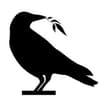Podcast
Questions and Answers
What is the primary function of the ovary in females?
What is the primary function of the ovary in females?
- Sperm production
- Menstrual cycle regulation
- Reproductive hormone production and ova production (correct)
- Hormone metabolism
Which of the following best describes the dual functions of the ovary?
Which of the following best describes the dual functions of the ovary?
- Ova production (exocrine) and hormone production (endocrine) (correct)
- Ova production and digestive enzyme release
- Hormonal balance and blood filtration
- Gas exchange and nutrient absorption
What type of function does the hormone production of the ovary represent?
What type of function does the hormone production of the ovary represent?
- Exocrine function
- Feminine function
- Endocrine function (correct)
- Reproductive function
Which of the following is NOT a function of the ovary?
Which of the following is NOT a function of the ovary?
In terms of reproductive health, why is the ovary significant?
In terms of reproductive health, why is the ovary significant?
What shape does a she-camel's ovaries take during the anestrum state?
What shape does a she-camel's ovaries take during the anestrum state?
How do the ovaries of a sow change shape during the breeding season?
How do the ovaries of a sow change shape during the breeding season?
What is the shape of a sow's ovaries in the non-breeding season?
What is the shape of a sow's ovaries in the non-breeding season?
What shape does a she-camel's ovaries take during estrus?
What shape does a she-camel's ovaries take during estrus?
During which reproductive state do the ovaries of a she-camel become mulberry in shape?
During which reproductive state do the ovaries of a she-camel become mulberry in shape?
Flashcards are hidden until you start studying
Study Notes
The Ovary
- The ovary is the primary female reproductive organ, responsible for both ova production (exocrine function) and hormone production (endocrine function).
- The shape of the ovary can change depending on the reproductive cycle, animal species, and activity.
- In camels, the ovary is oval and flattened during the anestrus (non-breeding) state and becomes mulberry-shaped during estrus (heat).
- In sows, the ovary is disc-shaped during the non-breeding season and becomes mulberry-shaped due to the presence of multiple follicles or corpora lutea (CL).
- The ovary's size can indicate its activity: an active ovary is typically larger due to the presence of follicles at various stages of development and CL.
- In cows, the right ovary is often more active and larger than the left ovary, which can be attributed to the anatomical position and physiological factors.
- A smooth, inactive ovary will be smaller due to the absence of structures on its surface.
- However, ovarian tumors can significantly increase the size of the ovary.
- Abnormal structures can be palpated on the ovary, including persistent CL and infundibulum.
Infundibulum
- The infundibulum is a funnel-shaped structure located near the ovaries.
- It contains finger-like projections called fimbriae or pavilions, which capture the ovulated ova from the ovary and prevent them from descending into the abdominal cavity.
Studying That Suits You
Use AI to generate personalized quizzes and flashcards to suit your learning preferences.





